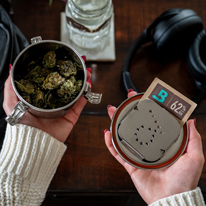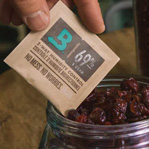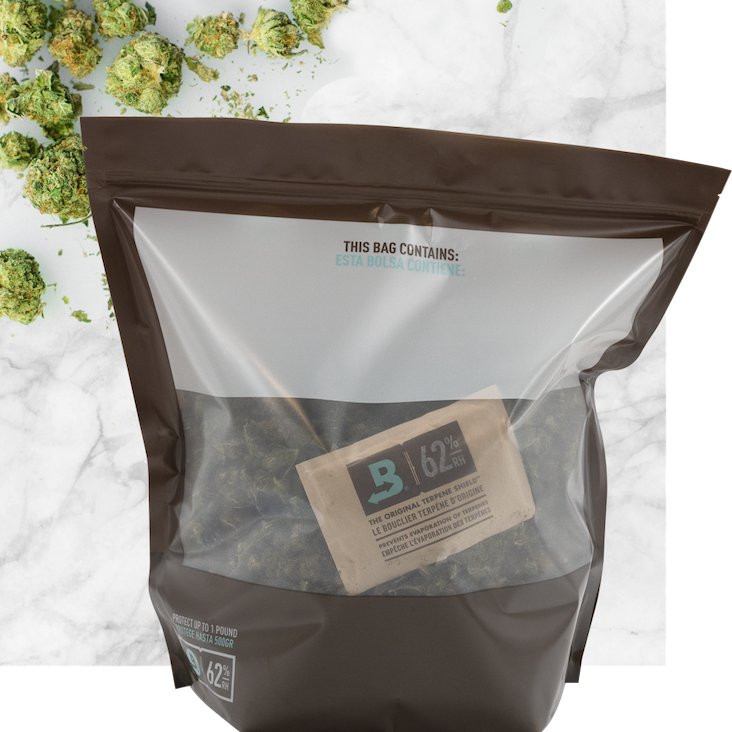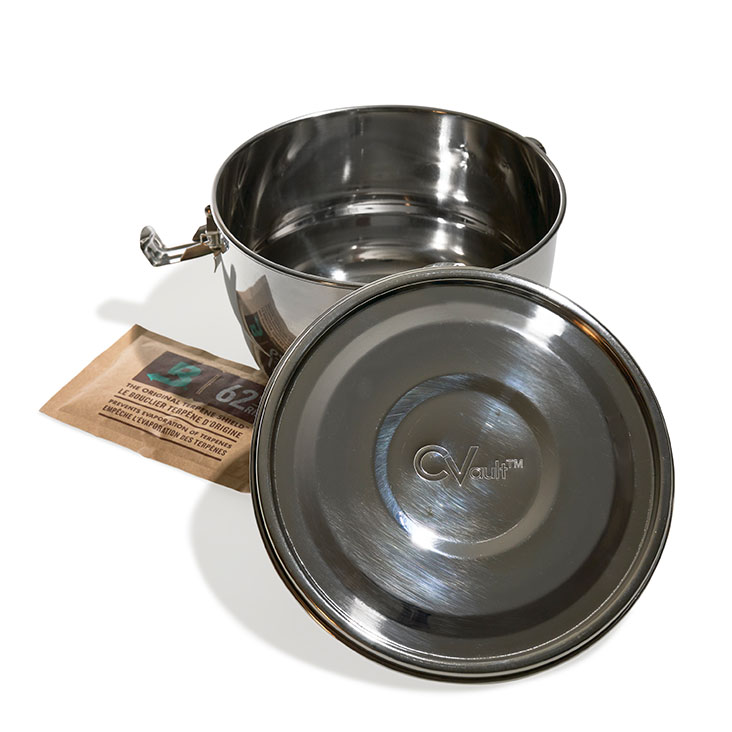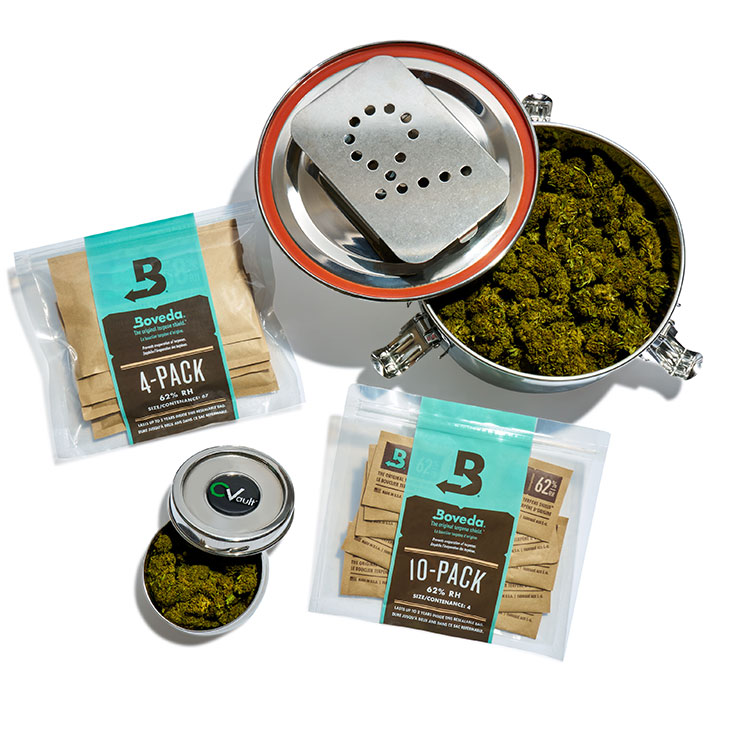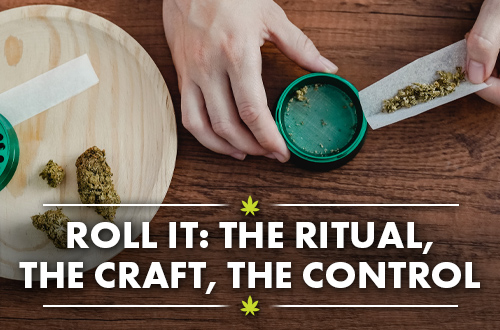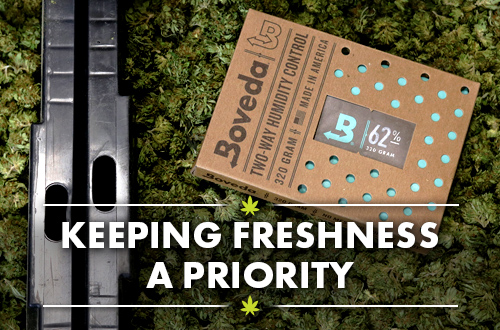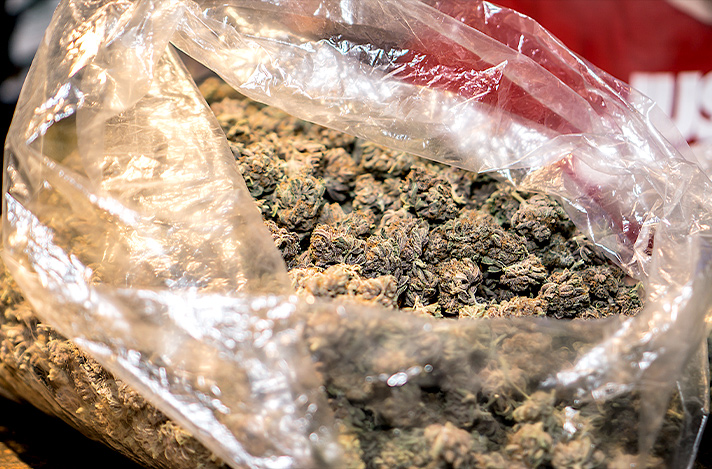
Growers, casual cannabis consumers, and die-hard weed enthusiasts all want the same thing: fresh bud. The best way to achieve that goal is a hotly debated subject.
Some people are “glass jars all the way,” preferring the airtight click of a pop-top Mason to ensure their stash is kept safe. Others roll out a big bucket for curing, transferring their haul to individual storage containers afterward.
And then there’s the discourse around storing cannabis in bags: Plastic bags, turkey bags, mylar bags, and so on. Some people swear by them, citing prevalent marketing points about the insularity, breathability, and “self-regulation” of these products.
Separating the bud from the shake—fact from fiction, that is—can seem daunting, even to an experienced grower or cannabis connoisseur. This article turns a scientific eye toward those bags, specifically. What are turkey bags (and their ilk)? What do the marketing points get right about them, and what’s fiction? And maybe most importantly, what are these conversations around storing cannabis in bags missing?
Here’s what you need to know about storing cannabis in turkey bags or other plastic bags.
Storing Cannabis in Turkey Bags, Mylar Bags, Totes, and More: An Overview
First, let’s establish our subjects. In the world of cannabis storage, a grower or consumer has several options. In the past, many people didn’t think too much about where they stored their cannabis, reaching for an average zip-top polyethylene baggie or screw-top jar. Now, as cannabis becomes a more accepted and researched topic, an entire cottage industry has popped up around storage, with several brands making competing claims.
Broadly, bag storage products fall into a few categories:
Turkey bags
Originally, people used literal turkey bags to store their bud (a practice some still observe to this day). They stocked up around Thanksgiving and used these large, high-barrier nylon poultry bags throughout the year. Now, companies sell “turkey bags” specifically designed to house cannabis. A turkey bag’s main selling point is its size (clocking in at roughly 18 by 24 inches), and its so-called ability to preserve flavors. There are even brands that tout a “special plastic blend” created for “better terpene… preservation.” How they accomplish the advertised preservation remains unclear.
Polyester Film Bags
Better known by its brand name, Mylar, is a material made from stretched polyethylene terephthalate. Mylar bags are popular in cannabis communities—for good reason. These bags are pretty cool! They’re odor-resistant, opaque, sturdy, and are relatively impermeable. The only problem is when companies make outsized claims about mylar’s ability to regulate humidity—a talking point picked up by some online articles and forum netizens. They might be designed for that high-minded goal, but no amount of bag design can defy physics.
Other Plastic Bags
If a type of plastic bag exists, chances are someone has tried using it for cannabis storage. Vacuum seal food bags; zip-top sandwich bags; low-density polyethylene bags with “antistatic” chemical additives; bags lined with active carbon to prevent odors, and so on. The world of plastic bags is vast and varied. In some cases—when they aren’t prone to ripping, UV exposure, or permeability—these bags work just fine! Again, the key is to resist outsized claims any bag manufacturer makes about “preserving” cannabis quality.
Storage Totes
Not a bag, but totes are worth mentioning since they often go hand-in-hand with the storage solutions above.
Basic totes are little more than industrial-grade tubs used to house the bags mentioned above, keeping them from smashing around in transit. Commercial manufacturers use more sophisticated totes for their excess stock, which can feature vented side walls for the drying process, gas pressure release valves for curing, operable window panels for product evaluation, etc. It’s essential to note that these tote storage solutions are only as good as the bags held within—which, themselves, are only as good as the proper humidity control practices employed within them (more on that below).
Separating Fact from Fiction: What They Do, and What They Don’t Do

Storing cannabis in bags like turkey bags, mylar bags, and various other plastic storage solutions can do quite a few things.
They can create an odor-resistant cushion for discreet cannabis storage. Their opacity can effectively limit the amount of UV rays that hit your bud, thereby preserving some potency. Static-free bags can help ensure that those terpene-rich trichomes remain on the buds, where they should be. And tightly sealed, durable bags can resist tears while inhibiting oxygen permeation.
But here’s where things get a little complicated. For all their benefits, these bags aren’t magical.
The Claim: “They Create a Perfect Micro-Environment for Cannabis” and “They Self-Regulate Humidity”
They do not. Any interior environment of any bag is susceptible to the ambient environment in which it’s placed. If a room is humid, the inside of the bag—however durable and tightly sealed—will eventually reach equilibrium with the room’s RH, and the same will happen for dry environments.
For a scientific explanation of how this happens, direct your attention to this peer-reviewed research article. The researchers ran experiments on Tedlar bags (roughly the medical industry’s equivalent of mylar bags), which they filled with dry air and monitored with a thermohygrometer. Then, “the evolution of the humidity in the Tedlar bags was monitored until equilibrium was reached between internal and external levels of humidity,” a process that took roughly a few hours. While the experiment indicates that double-layered bags “slow down the moisture increase” in the bag, no bag can create a lasting, effective buffer between outside and inside RHs.
Yet, that’s exactly the verbiage some bag companies use. They pitch products as “guards” against RH fluctuations. And they tout their bags as being a “perfect micro-environment.” This simply isn’t true. If it were, a scientist could perfectly preserve a specimen for centuries using little more than a $5 mylar bag. If that sounds like science fiction, it’s because it pretty much is.
Why Language Matters
As mentioned at the very top of the article, everyone’s pulling in the same direction. Everyone wants fresh bud. So, at least from the perspective of consumer transparency, the language around proper cannabis storage matters. No cannabis user should labor under the illusion that a simple turkey bag or mylar bag can be a silver bullet solution for their cannabis storage.
At best, this misinformation lets people down by compromising their stash. It assures them, falsely, that their storage bag alone can weather humidity fluctuations; over time, this will result in users experiencing reduced flavor and potency in their hard-earned or grown cannabis. In other words, it wastes money, wastes time, wastes resources.
At worst, this exaggerated language can potentially lead to hazardous mold growth. If you live in a humid environment and were to believe the claim from storage bag manufacturers about “the perfect microclimate,” you might justifiably assume that your stash is well protected. Over time, however, the humid environment can create enough moisture for mold spores to feed and proliferate. And if you don’t know how to tell if weed is moldy, you might justifiably smoke it. That would not be good. Language matters, as does a strong scientific backing. The following sections cover how to store cannabis the right way. A discussion that begins—but doesn’t end—with a good bag.
The 1lb Boveda Bag: An Exemplary Storage Bag That Doesn’t Claim to Be a Silver Bullet Solution
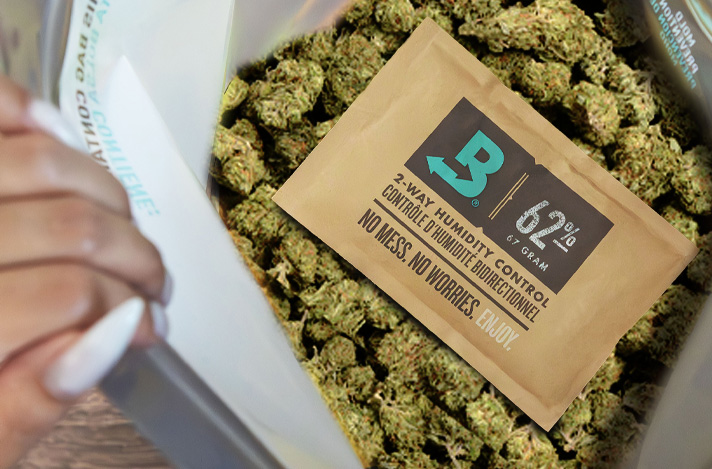
For proper storage, a good bag is one part of the equation. The 1 lb Boveda Fresh Bag combines all the benefits of the best storage bags listed above—without claiming to be an “ideal micro-environment” or “humidity self-regulator.”
A Boveda bag zips tightly closed for a great seal and is easy to reopen for fast access. It’s reusable and made from premium, multi-layer, 4.5mil plastic for added durability. Its opacity protects against UV damage. It’s constructed to reduce static build-up so the bag doesn’t rip away any of those precious, terpene-rich trichomes. It’s odor-resistant for discreet storage. And it keeps oxygen and other unwanted gases out.
Plus, there’s a few value-adding features for the commercial grower, hobby farmer, or casual cannabis user. You get a little viewing window so you can quickly evaluate the bag’s contents. There’s a handy section up top that says “This bag contains:” overtop of a blank space for writing the strain names of different types of cannabis, the harvest dates, when you last added a Boveda pack, etc. The 8-inch gusseted bottom flares open to sit flat when you fill it with flower. And when you’re done using the bag, you can fold it flat for efficient storage. What does the 1lb Boveda bag not do? It doesn’t protect your bud from humidity fluctuations. For that, you need to add a step—a very simple, very inexpensive step.
Without a Boveda Pack, a Bag Is Just a Bag
As the research linked above plainly demonstrates, the contents of a bag will eventually reach equilibrium with the relative humidity of its surrounding environment. That is, without something inside the bag working to counteract those humidity extremes.
Enter the Boveda 2-way humidity control pack. The pack contains a proprietary mixture of salt, purified water, and food-grade thickener wrapped neatly in a vapor phase osmosis membrane. Its job is simple: add or remove moisture vapor to stabilize the enclosed environment and deliver the RH level printed on the pack. When the humidity spikes, the pack absorbs moisture vapor; when the humidity dips, the pack releases moisture vapor, maintaining a consistently ideal RH for your cannabis.
Growers trust it to dial in the humidity for drying cannabis and curing flower. Casual users and cannabis enthusiasts trust it to keep their stash’s terpenes locked inside their bud. And commercial distributors trust it to keep their buds fluffy and sticky during transport.
In the end, that’s what matters: trust. Don’t trust the outsized claims made by weed bag companies about their products’ magical ability to defy basic science. Often, their bags are good—great, even. However, unless you supplement any bag with a 2-way humidity control pack, you will render your bud defenseless against the natural flux of RH.
Best Practices for Cannabis Storage and Revival
Lastly, here’s a review of the best practices for cannabis storage (or how to rehydrate weed, if you’re dealing with a dry stash).
To start, you want an airtight, UV-blocking container at the bare minimum. Some people opt for pop-top jars hidden away in a dark part of the home. If you’re storing cannabis in bags, reach for the one of the options we’ve listed in this article: mylar bags, turkey bags, or Boveda’s 1 lb Fresh Bag.
Ideally, you should store the bag at a temperature around 65 degrees Fahrenheit. Luckily, 65 degrees is just a hair chillier than the recommended thermostat temperature—so you should be good!
Next, you need to control for humidity. As mentioned, the best way is to pop a Boveda pack into your storage container. Choose between 62% RH for fluffy, sticky weed, or to revive a stale stash, or 58% RH for buds that grind easily for a smoother smoke. Critically, you need to replace your Boveda pack roughly every three months. The pack will “tell you” that it needs replacing when it becomes solid all the way through.
To summarize this sprawling consideration storing cannabis in bags, remember one key point: a bag is just a bag. A quality bag can do several wonderful things, from blocking light to resisting odors. It can’t, however, create a perfect micro-environment or resist humidity fluctuations. To preserve those precious terpenes, you need a correct storage strategy complete with ideal temperatures and Boveda’s 2-way humidity control packs.


